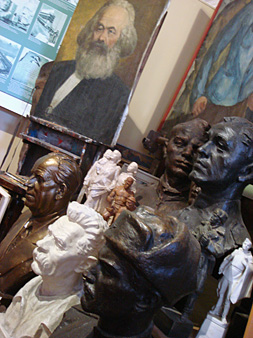 Tuesday after our guest lecture I went with a group of my classmates to the Museum of Communism on Wenceslas Square. The museum consists of only a few rooms, but they have plenty of interesting exhibits and information. The museum’s examples of Communist propaganda are audacious; its accounts of individual courage are inspiring. My time at the museum helped me better understand bits of Czech history that are often mentioned in passing but that I had never heard explained systematically. I still have a lot to learn, though.
Tuesday after our guest lecture I went with a group of my classmates to the Museum of Communism on Wenceslas Square. The museum consists of only a few rooms, but they have plenty of interesting exhibits and information. The museum’s examples of Communist propaganda are audacious; its accounts of individual courage are inspiring. My time at the museum helped me better understand bits of Czech history that are often mentioned in passing but that I had never heard explained systematically. I still have a lot to learn, though.
One of the most gripping parts of the museum is the video they have from the Velvet Revolution of 1989, when Communism fell in Czechoslovakia. Eerie home movies show riot police rushing into Wenceslas Square and beating student protestors with night sticks.
For some of my classmates this history is very real. Many of their parents lived most of their lives under Communism, and a few of the students remember living under Communism themselves. In my group at the museum there was a student from Slovakia who added firsthand information to the exhibits.
Among the things that stood out to me from the visit was an estimate of how many people have died as a result of Marx’s ideas (around 100 million) and statistics on how living under Communism affected life expectancy. There also several pictures of totalitarian leaders in familiar Prague locations–Hitler standing in Prague Castle overlooking the city and a painting of Lenin standing bundled in an overcoat on the Charles Bridge on a snowy day.

Communist era motorcycles

Statues and paintings honoring Communist leaders

When the Soviets invaded Czechoslovakia, the people of Prague destroyed their street signs in an attempt to disorient the foreign army.